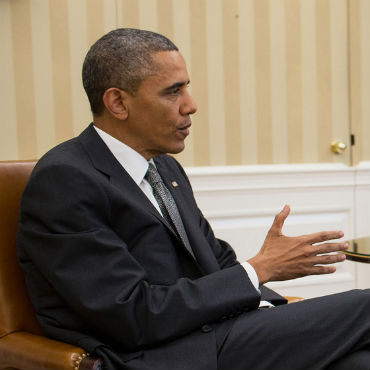Obama vetos NDAA, new governance for shared services and more

News and notes from around the federal IT community.

President Barack Obama vetoed the National Defense Authorization Act as part of his ongoing fight with Republicans over spending priorities.
Obama vetoes NDAA
President Barack Obama vetoed a $612 billion defense policy bill on Oct. 22 in the latest round in his fight with Republicans over spending.
It is rare for a president to veto a National Defense Authorization Act, but Obama followed through on a promise to oppose the legislation because of its use of overseas contingency operations funding to skirt spending caps.
The fiscal 2016 bill contains several provisions aimed at speeding up and simplifying the way the military acquires IT. For example, the legislation would allow the Defense secretary to respond to a cyberattack by designating a senior official to quickly acquire the supplies and services needed to mitigate the effects of an attack.
The bill's fate is uncertain. The Senate passed it with a veto-proof majority, but the House did not. Eric Schultz, a White House spokesman, said administration officials are confident the veto will not be overturned, according to news reports.
Shared services get a center of gravity
The push for shared services is getting an official home in government, Dave Mader, acting deputy director for management at the Office of Management and Budget, announced Oct. 22.
A Unified Shared Services Management organization is being created within the General Services Administration. Elizabeth Angerman, director of the Treasury Department's Office of Financial Innovation and Transformation, will lead it.
Shared services -- an arrangement under which one agency provides IT, human resources, financial or other services to other agencies -- is one of the Obama administration's Cross Agency Priority Goals. Creating the USSM organization is considered a key milestone in that effort.
At a Partnership for Public Service event in Washington, Mader said the new group would serve as a governance board and bring much-needed structure to what has so far been a fairly ad hoc initiative. Although shared-services champions have made real progress at a number of agencies, he said, "it needs to be codified somehow. It can't just be this merry band of zealots."
GSA Administrator Denise Turner Roth, who also spoke at the event, agreed that shared services were gaining traction -- "we're no longer talking about whether this is necessary or if this is the right approach," she noted -- but said the pressure would now be on the new team to deliver added value for agencies.
Angerman voiced cautious optimism. "There's a lot of leverage to be had," she said, but agencies' top leaders must make it clear that using shared services is not only important but "important to them." At Treasury, shared services are written into "the strategic plan for our whole department."
All the speakers acknowledged that much work remains to be done and that funding models are a key concern. Mader said OMB would suggest changes in time for the next budget cycle and declared that the status quo "is not a sustainable model."
"We can get through [fiscal 2016]," he said, but "we can't get to where we want to go."
Where's the strategic sourcing?
The Government Accountability Office issued an Oct. 22 report calling on major federal agencies -- NASA, the Defense Department and the Department of Homeland Security in particular -- to use their buying leverage to reap savings on IT purchases.
In the private sector, leading companies strategically source -- or take an aggregate approach to acquisition rather than piling up expensive individual purchases -- for some 90 percent of their procurement spending, GAO noted. (Strategic sourcing's standardizing spirit guided the Office of Management and Budget's directive this week to ban new laptop and desktop contracts.)
But at NASA, DHS and DOD, a much lower percentage of IT spending went through preferred strategic sourcing vehicles in fiscal 2013: 44 percent at DHS, 35 percent at NASA, 27 percent at the Army, 17 percent at the Air Force and a mere 10 percent at the Navy.
The agencies also struggled to control labor costs because vendors used a wide array of labor categories, making pricing comparisons difficult, GAO reported.
GAO recommended a variety of control measures to help the agencies promote strategic sourcing: analyzing spending, developing savings goals and metrics, and standardizing labor categories.
NEXT STORY: GSA's fast lane is open for business


